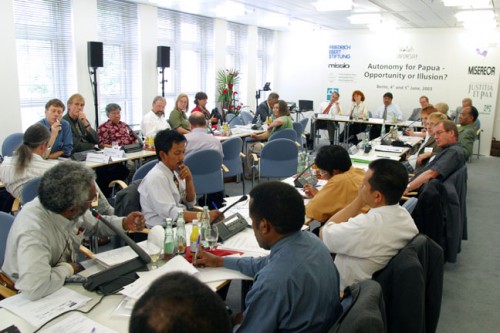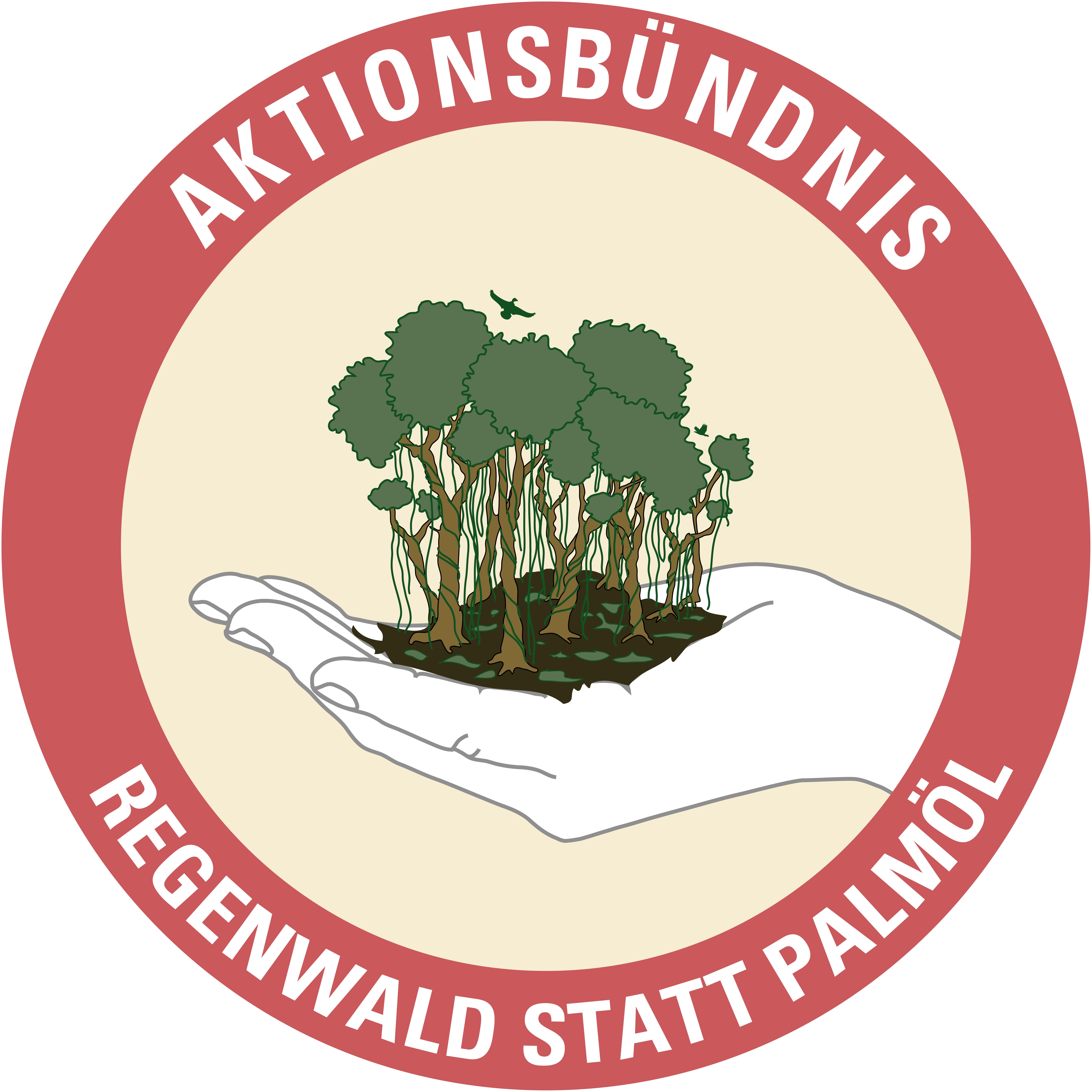Programs to Improve the Quality of Education and Health in Papua under the Special Autonomy
Conference “Autonomy for Papua – Opportunity or Illusion?”, 04-05 June 2003
by Agustina Iwanggin Tanamal
Introduction
The development process in Papua from one political regime to another has evolved very slowly which basically made Papua the most abandoned province in Indonesia. The Papuans live in various ecosystems, spread from the highlands to the lowlands, including the swamps and estuaries areas, each with different social system. These diversities require a special development policy or program. In general, barriers to the involvement of the Papuans in development are, amongst others, the low quality of education, the low quality of productivity and the limited access to various development facilities.
Based on various experiences of development in Papua, it can be concluded that one of the main causes for developmental failures is the top-down approach employed by the Government. This approach assumes that the public has no capability to organize themselves and to mobilize their resources for their own benefit. Experience shows that the top-down approach is not a way out of Papua’s development problems. It is therefore important that a bottom-up approach is adopted in the Special Autonomy era. Such an approach assumes that the public has the capacity and the knowledge to plan and implement development. The people are able to use their capabilities, capacities and indigenous knowledge to organize themselves in order to answer their needs and solve their problems.
In the Special Autonomy era, the Government of Papua has identified four strategic development sectors, i.e. education, health, physical infrastructure and people-based economy. These four sectors are considered strategic since they act as the pillars for basic social welfare on the basis of which other development sectors can then be advanced.
The development of the education sector
The eventual objective of education development is for the people to understand their problems and to be able to mobilize and make us of their resources in order to have a better living. To be able to achieve that goal, education development requires credible human resources as well as availability of science and technology.
In general, the quality of education in the Province of Papua is quite good in the urban areas. However, in the rural and remote areas the quality is very poor. The main causes for this situation are the difficulties to reach isolated areas which affect the Government capability to build proper education facilities, the limited number of teachers who are willing to work in the remote areas as well as poor attention and care for those teachers by the Government. This admittedly is a dilemma. On the one hand, it is acknowledged that education is the right of every citizen of the country. On the other hand, it is difficult and expensive to provide quality education for the rural and remote areas in Papua. The table below presents data on education participation in Papua.
The Condition of Participation Value of students at Elementary School (ES), Junior High School (JHS), and Senior High School (SHS) in Papua Province
No Component Educational Year 1998/1999 1999/2000 2000/2001 2001/2002 2002/2003 1 Pure participation Value
- ES
- YHS
- SMS
82.01
35.72
18.9083.07
38.25
19.2484.15
39.76
21.6785.10
42.15
23.0085.95
43.87
24.542 Gross participation value
- ES
- YHS
- SMS
95.55
46.98
29.3795.13
48.06
28.6296.16
49.57
29.1597.08
50.30
30.2998.15
52.30
32.98The above data reveal at least two important lessons: First, the participation rate of the Papuans in education is generally very poor. Second, the annual increase of participation is very small. This means that we have to search for a better strategy to overcome the various barriers and increase the Papuans’ participation in education. More serious efforts have to be put into constructing education facilities, making available laboratory instruments and other facilities, recruiting high quality teachers and providing better welfare for them. Under Special Autonomy, these extremely important factors have to be part of the Government’s commitment for education development.
The teacher/pupil ratio in Papua is 1:20. This figure might lead one to assume that the situation is basically ideal. However, the simple figure veils the fact that teachers are mostly concentrated in schools in the urban areas. The most ‘popular’ reasons for this are amongst others:
(1) Teachers’ spouses are often Government employees working in the cities;
(2) a lack of housing and other facilities discourages teachers to stay long in rural areas;
(3) difficulties to adapt to the local situation, especially in relation with the local people’s lifestyle;
(4) poor Government attention to improvement of living condition for teachers, including contract teachers.Realizing the condition of the education development in Papua as presented above, the Provincial Government and Parliament of Papua allocated a significant amount of funds to the improvement of the education situation especially in the rural and remote areas. Under the Special Autonomy program, a total of Rp. 159 billion has been allocated in 2002, which was raised to Rp. 181 billion in 2003. Parts of the funds were granted to non-governmental educational foundations, such as the Christian Education Foundation (YPK), the Catholic Education Foundation (YPPK), the Evangelical Churches Educational Foundation (YPPGI), the Holy Spirit Christian School Foundation (YSKKK) and the Islamic Education Foundation (YAPIS). The provision of these funds by the Government was largely due to the acknowledgment and appreciation of the long standing of these foundations in serving the community in the realm of education, especially in the remote areas.
The Development of Health Service
Basic health services, especially in rural areas, were provided by the Center for Public Health (PUSKESMAS) and the Secondary Center of Public Health (PUSTU). The number of nurses at the PUSKESMAS was 216, while at PUSTU their number amounts to 984. In the past, the budget for all health activities depended on the provision of the Central Government. This was the major factor behind the limitation of the services PUSKESMAS could deliver to the community.
The implementation of the Special Autonomy Law for Papua has significantly changed the availability and management of the health services’ budget: In the 2002 fiscal year, each PUSKESMAS received Rp. 30 million as its operational fund. This is in addition to other funds allocated for the improvement of PUSKESMAS facilities and for various health programs. It was expected that this would improve health services for the community.
One issue which remains highly challenging is the distribution of medicines for remote and isolated areas. It has been proven that often the medicine was damaged by time due to the unavailability of specific funds to distribute them.
Taking into consideration the above facts, in the 2002 budget, some 24.2 billion Rp. were allocated for medicine provision related programs. The terms of reference of this plan were:
(1) The pharmacies at the regency/municipality level should store enough stocks and at the same time be able to distribute the medicine to the PUSKESMAS/PUSTU level.
(2) The budget planning by the Government of each regency/municipality for the distribution of medicine should carefully take into account the geographic and transportation condition.
(3) The Provincial Government should also build up its own medicine buffer stock which should be readily available, so that medicine can be distributed whenever necessary to wherever necessary in the Papua Province.As regards to the community nutrition development program, the most challenging factor is nutrition deficiency. This can be seen from the severe cases of energy deficiency, nutrition anemia and iodine deficiency. The Provincial Health Department advocates the following main programs to systematically address the nutrition problems in Papua:
(1) Providing supplementary food, especially for babies and children;
(2) conducting nutrition awareness courses;
(3) distributing iodine capsules in the regions of iodine deficiency;
(4) providing micronutrient treatment, including vitamin A, for children under the age of 5 to prevent endemic and infectious diseases.In relation to health services for mothers, the main problems faced are nutrition deficiency and the capability to provide sustainable ante-natal care. To evacuate a patient in an emergency situation by using air transportation, for instance, is very expensive. The way to solve this problem is by increasing the skills of nurses in rural and isolated areas as regards to ante-natal care. In the Special Autonomy era, this program is implemented step by step, by improving the capabilities of PUSKESMAS, including its capability to handle the emergency situation. Paramedics are trained in order to increase their capability to operate necessary instruments in the PUSKESMAS. Another important program is the allocation of funds to non-profit Aviation Companies for the evacuation of patients from the remote areas.
Statistics show that the most important diseases are still malaria, diarrhea and upper respiratory infection. Malaria is the main disease in Papua. Through increasing the capabilities of the health service system, step by step problem solving measures were implemented comprehensively and integrally by means of medical treatment, vector control, safe insecticide spraying and better and cleaner environment to significantly reduce the mosquito habitat.
Special attention was also given to tackle the HIV/AIDS problems. The main challenges were areas to be covered as well as social factors to be dealt with. Therefore, a significant amount of budget was allocated for disease surveillance as well as to create public awareness of HIV/AIDS. To combat HIV/AIDS means that the public in general should be able to obtain the necessary information so that risky behavior can be avoided. Besides surveillance and public education, medical treatment was also funded. We know that this program is very expensive, but this step has to be taken to reduce the problem of HIV/AIDS in Papua.
The skills of medics were improved by providing academic training for them. Related with this program, specific funds were allocated for further education of paramedics. Some 918 paramedics were funded to undertake undergraduate degrees in environmental health, while 179 others were supported to obtain the first degree in public health.
Conclusion
Based on the above elaborations, it can be concluded that even though the Law of Special Autonomy has clearly mentioned sectors to be developed in Papua, but the most important issue is the ability of the Government to allocate and manage the budget to meet the real needs of the people. The Government must be serious in allowing public participation based on the principle of equality so that the public become the real actors of development in the Special Autonomy era. At the same time, the Papuans should take the initiative and improve their capabilities to manage their resources optimally.
The allocation of a significant amount of development funds under Special Autonomy requires the Papuan Government to be responsible, accountable and transparent, also with regard to the education and health sectors. The availability of funds should enable the Government to design empowered education and health systems which can really improve the quality of human resources in Papua.
At the end, the development of Papua should be a sustainable one. The next generations should also be allowed to enjoy the high quality of development services. Only by doing this, the goal to enable them to become the masters of their own land can be reached in the shortest time possible.








